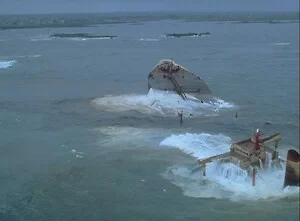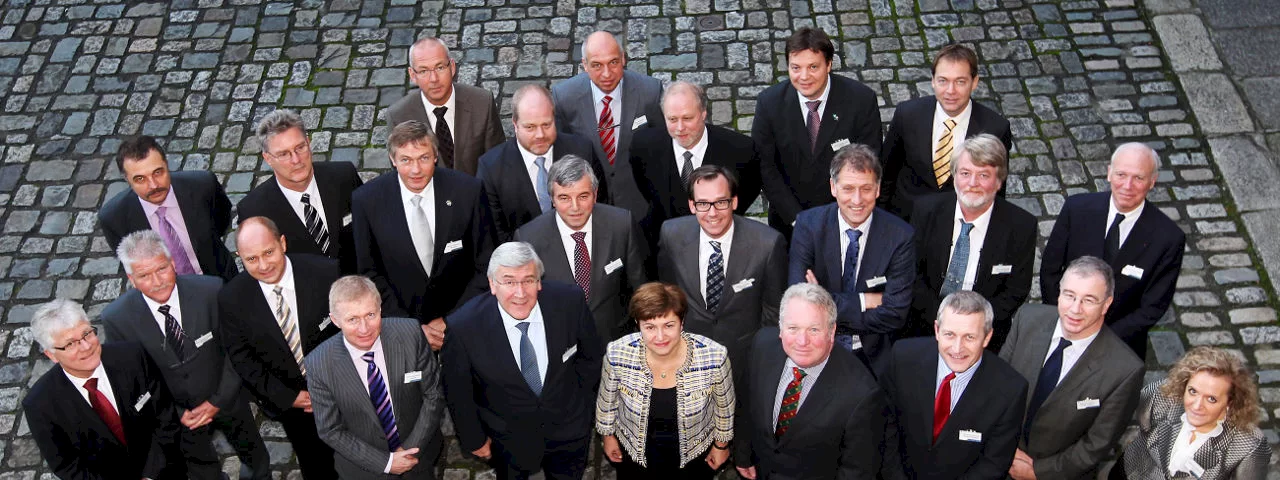History and key milestones
The Bonn Agreement is the oldest regional agreement established by governments for responding to pollution incidents.

The first "Agreement for Cooperation in Dealing with Pollution of the North Sea by Oil" was signed in 1969 by the eight states bordering the North Sea: Belgium, Denmark, Germany, France, the Netherlands, Norway, Sweden and the United Kingdom. This was shortly after the oil tanker "Torrey Canyon" broke up off Cornwall in 1967 spilling 117 000 tonnes of oil in the first major pollution disaster affecting Western Europe. However, the Bonn Agreement was not activated until the late 1970s after two other major pollution incidents had occurred: the "Ekofisk" blow-out in 1977 and the "Amoco Cadiz" in 1978. The Agreement has continued to function effectively ever since.
The original 1969 agreement was replaced in 1983 by a new Bonn Agreement covering "other harmful substances" as well as oil. At that time, the European Union (then the EEC) became a Contracting Party; and financial arrangements were introduced for the reimbursement of costs by one Party to another in cases of mutual assistance. In 1989 the text of the Bonn Agreement was amended to include within its remit aerial surveillance for the detection of operational and illegal spills which came into force on 1 April 1994. A key debate in the mid-1990s was the prosecution of discharge offences at sea. There was concern that in spite of aerial surveillance of oil spills, no sanctions were imposed on polluters in breach of MARPOL 73/78. Several seminars were organised providing the opportunity to consider different views on the acceptability of evidence obtained from aerial surveillance and oil fingerprinting.
In 2001, Bonn Agreement Contracting Parties adopted a Decision providing for the accession of Ireland to the Bonn Agreement. The instrument of accession entered into force on 1 April 2010. In 2001, the Contracting Parties also adopted a Decision to modify the zones of responsibility to align them with Exclusive Economic Zones. This process is ongoing.
Other key issues addressed in the 2000s were: the revision of the Bonn Agreement Oil Appearance Code for quantifying oil spills at sea; enhancing cooperation with HELCOM and the mutual granting of observer status; continued cooperation on aerial surveillance; IMO and European Commission requirements for establishing places of refuge; offshore wind energy parks; sensitivity mapping; the formation of the European Maritime Safety Agency (EMSA) in 2002; the advent of the SuperCEPCO (Coordinated Extended Pollution Control Operation) in 2007.
In 2010, the Bonn Agreement Ministerial Meeting was held in Dublin on 24 November. The meeting was attended by Ministers and representatives from the 10 Contracting Parties.

In 2011 the Bonn Agreement submitted an application to the European Commission 2011 call for proposals under the Civil Protection Financial Instrument for a project on an Area-wide Assessment of Risk Evaluations for the Bonn Agreement area, the BE-AWARE project. The application was successful and the two-year project completed its work on 31 December 2013. An application for a second BE-AWARE project on "Area-Wide Assessment of Risk Evaluation 2 – BE-AWARE 2" was also successful. The two-year project ran from December 2013 to November 2015.
Multilateral Agreements
In addition to the Bonn Agreement, several multilateral agreements function in the North Sea area: between Denmark, Germany and the Netherlands (DENGERNETH); between France and the United Kingdom (MANCHEPLAN); between Norway and the United Kingdom (NORBRITPLAN) and between Belgium, the Netherlands, France and the United Kingdom (QUADRIPARTITE ZONE).
Obligation on the states
The Contracting Parties implement the Agreement by:
- keeping their zones of responsibility under surveillance for threats of marine pollution, including coordinating aerial and satellite surveillance;
- alerting each other to such threats;
- adopting common operational approaches so that they can rely on each other to achieve the necessary standards of prevention and clean-up;
- supporting each other (when asked to do so) in response operations;
- sharing research and development;
- carrying out joint exercises.
The most fundamental obligation is for States to inform the other States of their national organisation for dealing with accidental pollution at sea and of new ways in which such pollution can be avoided. Contracting Parties are also obliged to inform each other about major pollution incidents they have dealt with. The Bonn Agreement meetings provide useful opportunities for Government representatives to exchange first-hand information about combating techniques and strategy and about any problems encountered which could be further addressed by the Agreement.
Contracting Parties are required to notify each other of any casualty or of the presence of oil or other harmful substances present in the North Sea which "are likely to constitute a serious threat to the coast or other related interest of any other Contracting Party". A standard notification format (POLREP) has been adopted for the reporting of pollution incidents.
The Bonn Agreement provides for mutual assistance between Contracting Parties. A state facing a pollution incident may request assistance from the other Contracting Parties. As a general rule, the costs of any action taken as a result of a request from a Contracting Party shall be reimbursed by that country to the assisting state.